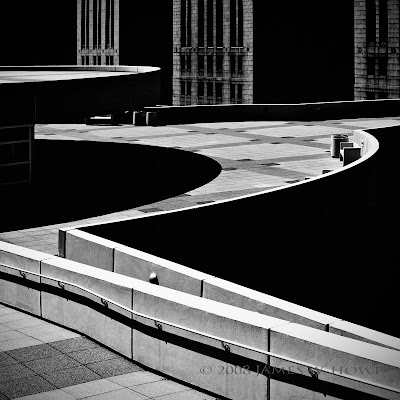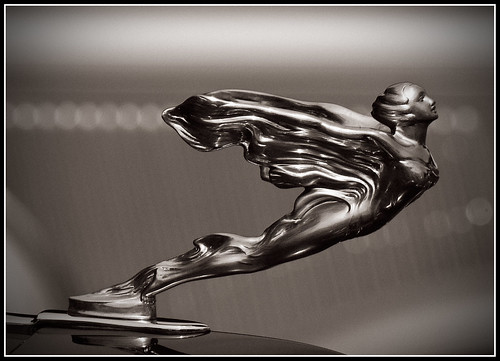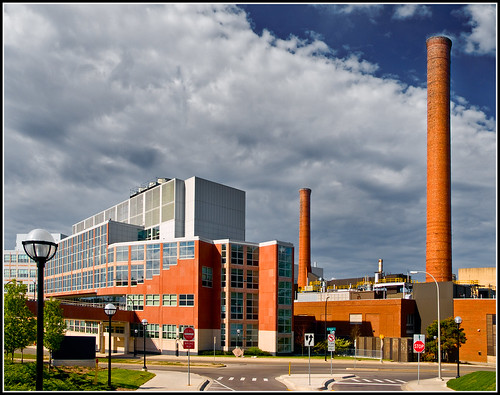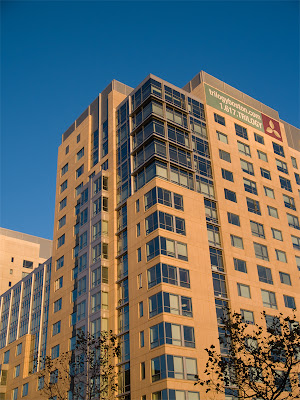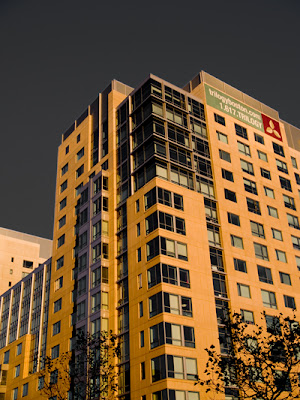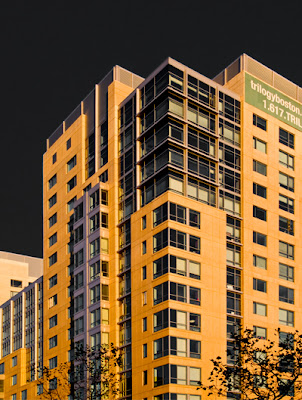This is a shot taken from the top of Monona Terrace in Madison, Wisconsin. Monona Terrace was designed by Frank Lloyd Wright but never built in his lifetime. Several years ago the project was resurrected and built. The building itself is hard to photograph unless you are out in a boat on the lake. The rooftop has a great terrace which has wonderful views of Lake Monona to the southeast, and the capitol building to the north west. The terrace also has a walkway which leads directly out to downtown Madison and it's a short walk to the capitol.
As you can see in 'as shot' image below, the original image was in color. I was trying to capture some of the lines and curves which make up the design of the building. I also liked the pattern in the pavement. My feeling is that while I may have captured some of the elements that I wanted, the raw image looks more like a snapshot than a finished work. There is visual competition from the parking lot/garage in the bottom right, people walking in the upper right and the buildings at the top. When I worked on this image, I wanted to reduce the clutter and make the image more about the lines and curves of Monona Terrace itself. I liked the buildings in the background, particularly since they are of a more 'traditional' design, but I wanted to de-emphasize them.
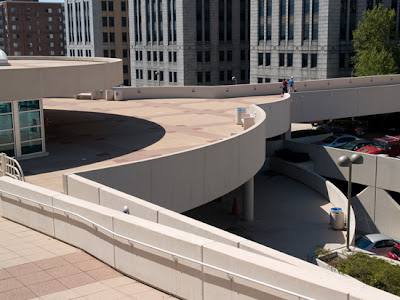

To the left is the layers palette as it exists in my Photoshop document. The names on the layers give an overall indication of the work done to the image. However, much of the actual darkening occurred before the image got to Photoshop. I did some initial corrections in Adobe Camera Raw. In particular, I pushed the blacks level to 55 and reduced the exposure just a bit. This helped darken the areas below the roof top. I converted to black & white which helped further develop the blacks.
The wide angle lens created a bit of distortion in the far buildings so I used the transformation tools to straighten them. I also did some painting in the lower right corner to remove the last remnants of the parking garage and other non-essential items. The final items were just to tweak the result. I added some film grain, cloned out some remaining non-essential items and added a slight vignette.
The image below is a variant of the final image. I wanted to see what the image would look like if I left it in color. This is not a selective color image. This is a full color image. It gives the appearance of a selective color image primarily because the buildings at the top are mostly gray and they are gray whether they are in the color image or a black and white image. This version of the image didn't get the full treatment that I gave the black and white. The buildings at the top aren't straight and there are some other things I would correct before I would consider this image done. I put it here to show an alternative interpretation.
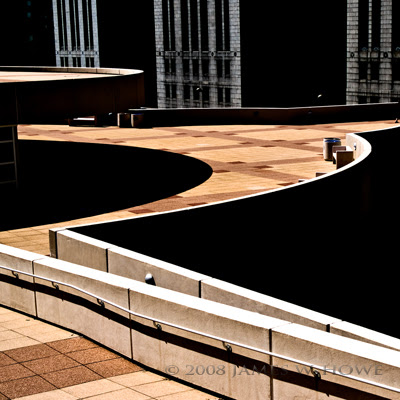
All images Copyright © 2007 James W. Howe, all rights reserved.
This image and others are available for sale at my Online Gallery
